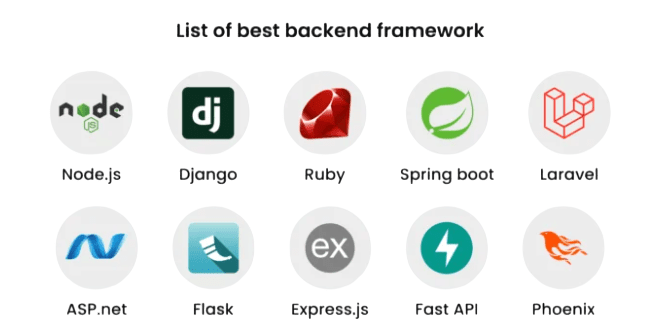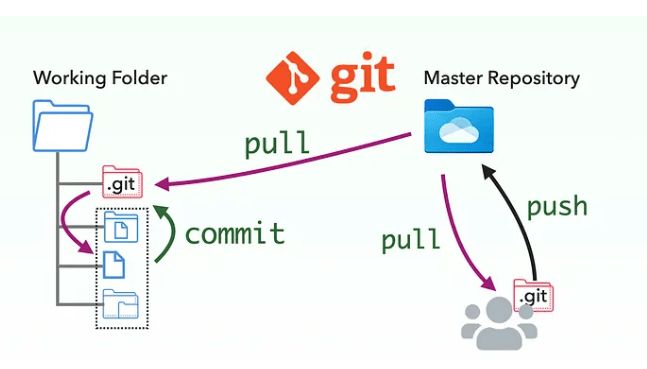
- Introduction to Web Development Technologies
- Frontend Technologies: HTML, CSS, JavaScript
- Backend Technologies: Node.js, Django, Ruby on Rails
- Database Technologies: SQL, NoSQL, Graph Databases
- Version Control Systems: Git, GitHub
- Web Frameworks: React, Angular, Vue
- Server Technologies: Apache, Nginx
- Web Hosting and Deployment Tools
Introduction to Web Development Technologies
Web development refers to the process of building, creating, and maintaining websites or web applications. It encompasses a wide range of tasks, from designing the user interface (UI) to developing the backend functionality and ensuring the website operates seamlessly on various devices and browsers. Web development is a dynamic field that integrates various technologies, including frontend, backend, database, Version Control Systems, and security technologies. As the digital world Web Designing and Development Courses , web developers continuously adapt to new tools and frameworks to build efficient, high-performing, and secure websites. The web development process can be broadly divided into three main areas: frontend development, backend development, and database management. Each of these areas uses different technologies to achieve its goals, and together they form the foundation of web applications. Additionally, there are several support technologies and tools that facilitate the deployment, optimization, and security of web applications. In this article, we will delve into the major web development technologies, providing a comprehensive overview of each.
Frontend Technologies: HTML, CSS, JavaScript
Frontend development refers to the part of web development that deals with the user interface (UI) and experience. It focuses on the visual and interactive aspects of a website that users interact with. The main technologies used in frontend development are HTML, CSS, and JavaScript.
- HTML (HyperText Markup Language): HTML is the foundation of all web pages. It defines the structure and content of a website by using a system of tags that identify different types of content. HTML tags can represent headings, paragraphs, links, images, forms, and other types of content. A well-structured HTML document ensures that a website’s content is organized and accessible to both users and search engines.
- CSS (Cascading Style Sheets): CSS is used to style and layout web pages. It controls the presentation, formatting, and layout of HTML elements. CSS allows developers to apply styles such as colors, fonts, spacing, and positioning to create visually appealing websites. With the introduction of advanced CSS features such as Flexbox and CSS Grid, developers now have more control over complex layouts. CSS also enables responsive web design, React Native Made Simple Beginner Step by Step Guide that websites adapt to different screen sizes and devices.
- JavaScript: JavaScript is a powerful, high-level programming language that enables interactive functionality on the web. It allows developers to create dynamic and responsive user interfaces by responding to user actions such as clicks, key presses, and mouse movements. JavaScript enables features such as form validation, animations, real-time content updates, and data manipulation without requiring the page to reload. JavaScript can be used alongside HTML and CSS to enhance user experiences by adding interactivity and real-time content updates. Together, HTML, CSS, and JavaScript form the core technologies for frontend development, allowing developers to create engaging and interactive web pages.
Start your journey in Web Development by enrolling in this Web Developer Certification Courses .
Backend Technologies: Node.js, Django, Ruby on Rails
Backend development focuses on the server-side logic, databases, and the overall functionality of a web application. It involves writing code that handles data processing, business logic, and communication with the frontend. Here are some popular backend technologies:
Node.js: Node.js is an open-source, cross-platform React Native and Barcode environment that allows developers to build scalable and high-performance web applications using JavaScript. Unlike traditional server-side environments, Node.js uses an event-driven, non-blocking I/O model, making it ideal for building real-time applications that require high concurrency, such as chat applications and live updates. Node.js has a vast ecosystem of libraries and frameworks, such as Express.js, that make backend development more efficient.

Django: Django is a high-level Python web framework that simplifies the development of secure and maintainable websites. It follows the “batteries-included” philosophy, providing built-in features such as authentication, database integration, and routing. Django follows the model-view-controller (MVC) architectural pattern, which separates the application’s logic into distinct components, making Node.js Non-Blocking Behavior in Web Developer Training easier to maintain and scale. Its security features, such as protection against SQL injection, cross-site scripting (XSS), and cross-site request forgery (CSRF), make Django a popular choice for building secure web applications.
Ruby on Rails: Ruby on Rails, often referred to as Rails, is a web application framework written in the Ruby programming language. Rails follow the convention over configuration (CoC) and don’t repeat yourself (DRY) principles, enabling rapid development. Rails encourages developers to write clean, reusable code and follow best practices. It also has built-in Database Technologies, testing, and deployment tools. Ruby on Rails is particularly popular for building startups and rapid prototyping, allowing developers to launch applications quickly. Each of these backend technologies has its strengths and is suited for different types of web applications. The backend technology choice often depends on the project requirements, team expertise, and scalability needs.
Unlock your potential in Web Development with this Web Developer Certification Courses .
Database Technologies: SQL, NoSQL, Graph Databases
Databases play a critical role in web development by storing and managing data the web application interacts with. There are several types of databases, each serving different use cases. The two most common types are SQL (relational) and NoSQL (non-relational) databases, and specialized graph databases.
SQL (Structured Query Language): SQL Database Technologies are relational databases that store data in tables with rows and columns. They use SQL to query and manage data. SQL databases are highly structured, ensuring data integrity and consistency through ACID (Atomicity, Web Developer Certification Courses, Isolation, Durability) properties. Popular SQL databases include MySQL, PostgreSQL, and Microsoft SQL Server. SQL is best suited for applications that require complex queries and transactions, such as financial systems, customer relationship management (CRM) systems, and enterprise resource planning (ERP) systems.
NoSQL (Not Only SQL): NoSQL databases are non-relational databases designed for handling unstructured or semi-structured data. They are often used for applications that need to scale horizontally and handle large volumes of data. NoSQL databases use different data models, such as document, key-value, column-family, or graph. Popular NoSQL databases include MongoDB, Cassandra, and CouchDB. NoSQL databases are well-suited for applications that require high scalability, such as e-commerce platforms, social media applications, and real-time analytics.
Graph Databases: Graph databases store data in a graph format, where nodes represent entities and edges represent relationships between those entities. This structure allows for efficient querying of complex relationships between data points. Graph databases are often used in applications that require complex relationships to be analyzed, such as social networks, recommendation engines, and fraud detection systems. Popular graph Database Technologies include Neo4j and Amazon Neptune. Each type of database has advantages, and the choice depends on the nature of the application, data structure
Version Control Systems: Git, GitHub
Version control systems (VCS) are essential for managing changes to source code and collaborating with other developers. Git is the most widely used distributed version control system, and GitHub is a popular platform for hosting Git repositories.
- Git: Git is a distributed version control system that allows developers to track changes to their code, collaborate on projects, and manage Downloading Node.js and NPM versions of their applications. Git allows developers to create branches for new features, fix bugs, and experiment without affecting the main codebase. Git’s powerful branching and merging capabilities make it ideal for team-based development, as developers can work on different parts of the project simultaneously and then merge their changes into the main codebase.

GitHub: GitHub is a cloud-based platform that hosts Git repositories and provides tools for collaboration, code sharing, and project management. GitHub makes it easy to manage code versions, track issues, and collaborate with team members through pull requests, code reviews, and comments. GitHub also integrates with continuous integration/continuous deployment (CI/CD) tools, making it a critical part of modern web development workflows.
Master the latest tools and techniques in web development through this comprehensive Web Developer Certification Courses.
Web Frameworks: React, Angular, Vue
Web frameworks simplify development by providing reusable components, libraries, and conventions for building web applications. React, Angular, and Vue are the most popular Frontend Technologies JavaScript frameworks.
React: React is a JavaScript library developed by Facebook for building user interfaces. It allows developers to create reusable components that can efficiently update the UI when the underlying data changes. React is known for Full Stack Developer Resume virtual DOM (Document Object Model), which optimizes rendering performance by updating only the parts of the UI that need to change. React is widely used to build single-page and complex web applications (SPAs).
Angular: Angular is a full-fledged Frontend Technologies web framework developed by Google. It is a comprehensive framework that provides many tools and features, such as two-way data binding, dependency injection, and built-in routing. Angular is suitable for building large-scale, complex web applications that require robust structure and organization. It uses TypeScript, a statically typed JavaScript superset, improving maintainability and scalability.
Vue: Vue is a progressive JavaScript framework known for its simplicity and flexibility. It can be incrementally adopted, allowing developers to use it for small parts of an application or as a full framework for building complex web applications. Vue provides reactive data binding, a component-based architecture, and an easy-to-understand API, making it an excellent choice for developers looking for a lightweight and efficient framework.
Preparing for Web Development interviews? Visit our blog for the best Web Development Interview Questions and Answers!
Server Technologies: Apache, Nginx
Web servers are responsible for serving web pages to users. Apache and Nginx are two of the most widely used web server technologies. Apache is one of the oldest and most widely used open-source web servers. It is highly configurable and can serve static content, process dynamic content, and handle various web protocols. Apache is known for React JS Developer Roadmap flexibility, extensive documentation, and a large community of developers. Nginx is a high-performance web server and reverse proxy server known for efficiently handling high traffic volumes. Nginx is often used for load balancing, serving static content, and acting as a reverse proxy for dynamic content. It is designed to be lightweight, scalable, and fast, making it a popular choice for high-traffic websites and applications.
Web Hosting and Deployment Tools
Web hosting and deployment tools are essential for making websites available to users on the internet. Tools like Docker, AWS, Heroku, and Netlify simplify deployment by automating infrastructure management and scaling.They support continuous integration and delivery (CI/CD), enabling frequent updates with minimal downtime. These tools offer various levels of Web Designing Training , from full server management to serverless hosting options. Security, performance optimization, and monitoring features are often built-in. Choosing the right tool depends on project requirements, technical expertise, and budget.




